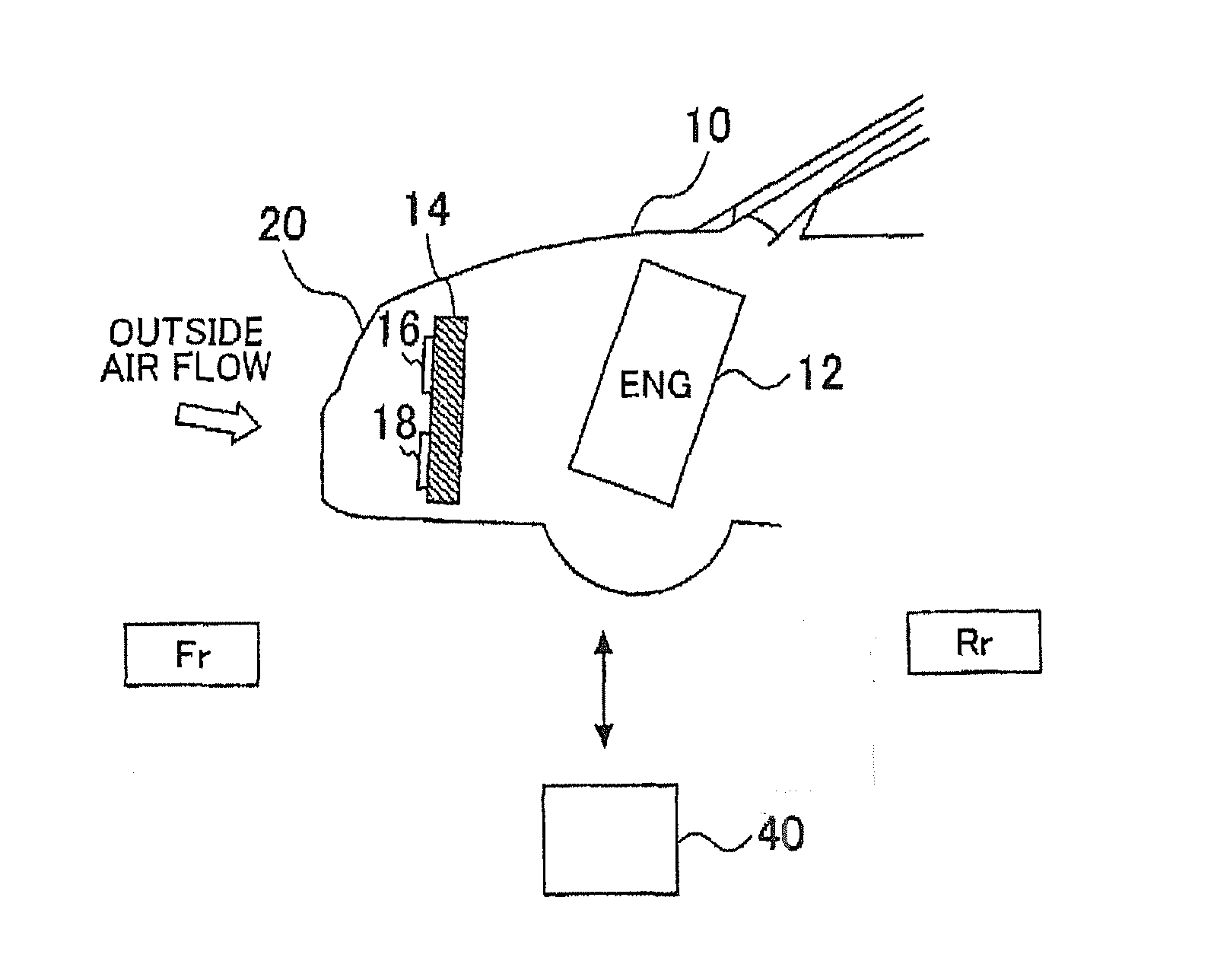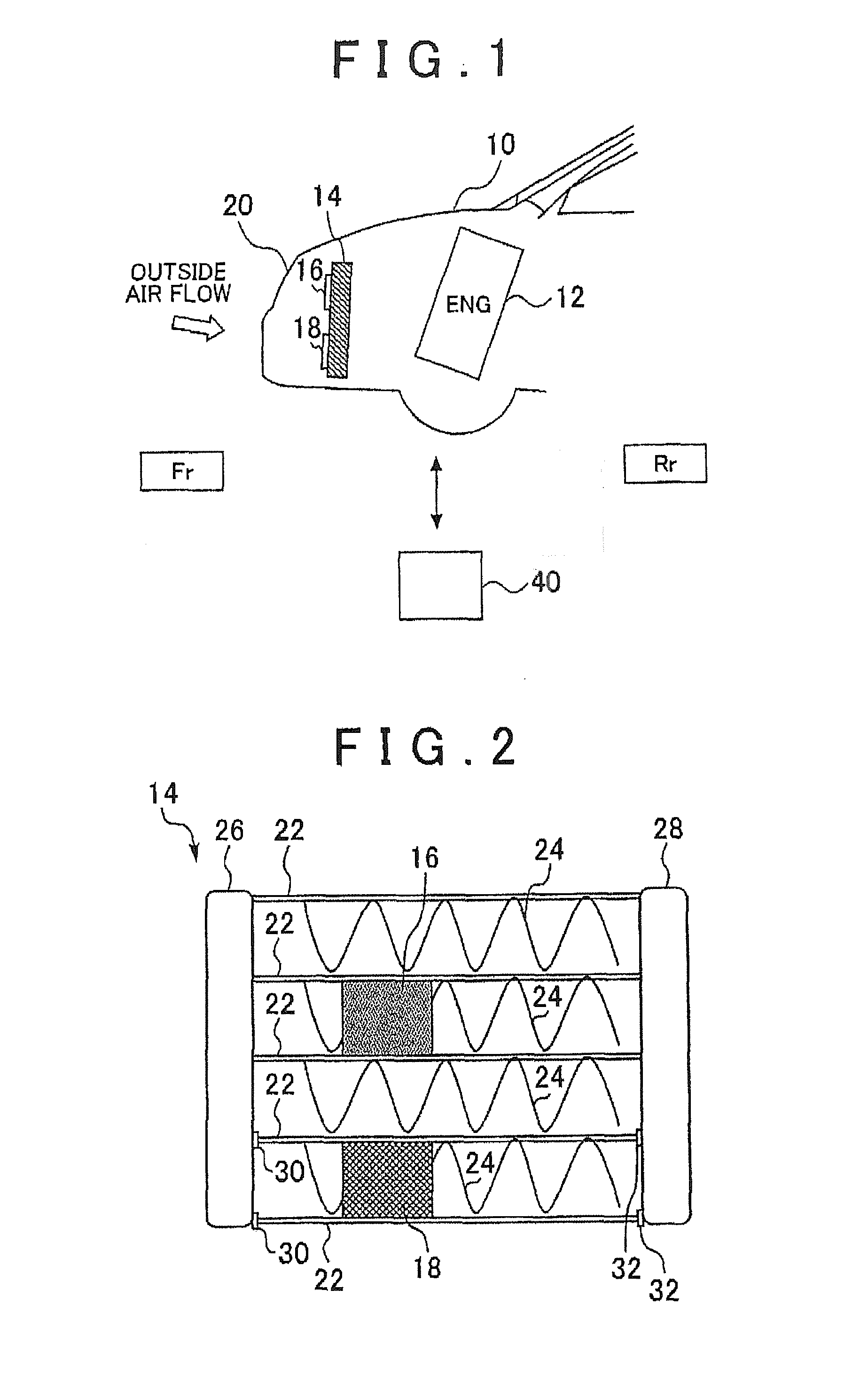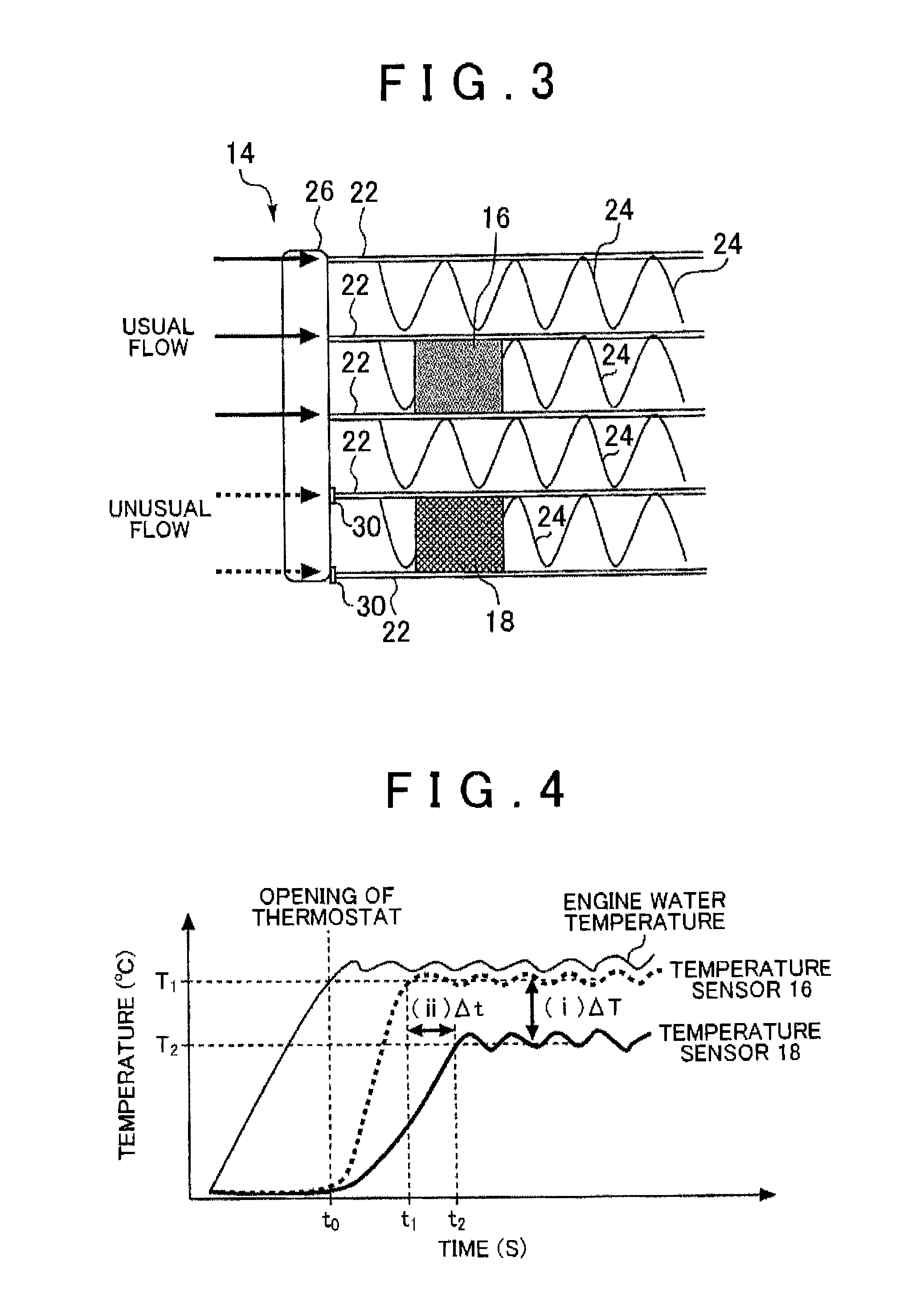Abnormality diagnosis apparatus for cooling system
a cooling system and abnormal diagnosis technology, applied in lighting and heating apparatus, fire alarms, instruments, etc., can solve the problems of not being able to precisely detect tampering with the radiator, and having an apparatus configuration that makes it difficult to conduct tampering,
- Summary
- Abstract
- Description
- Claims
- Application Information
AI Technical Summary
Benefits of technology
Problems solved by technology
Method used
Image
Examples
first embodiment
[0049]Next, with reference to FIG. 5, the specific method of the above tampering diagnosis will be described. FIG. 5 is a flowchart showing the tampering diagnosis process executed by the ECU 40 in the Note that the routine shown in FIG. 5 is assumed to be periodically executed repeatedly in synchronization with the valve opening timing of the thermostat (preferably the first valve opening timing after the start of the engine).
[0050]In the routine shown in FIG. 5, first, the ECU 40 determines whether or not a diagnosability condition is satisfied (step 100). Specifically, the ECU 40 determines whether or not the sensor error of the temperature sensor 16 or 18 is detected. In a case where the sensor error is not detected, the ECU 40 determines that the diagnosability condition is satisfied. Consequently, the ECU 40 advances to step 110. On the other hand, in a case where the sensor error is detected, the ECU 40 determines that the diagnosability condition is not satisfied. Consequen...
second embodiment
[0073]Note that, in the second embodiment described above, the header tank 28 corresponds to the “common flow path” of the fourth aspect of the invention.
[0074]Next, a third embodiment of the invention will be described. The present embodiment is characterized in that the closed portions 30, 32 of the first embodiment are formed of a material that has a low thermal conductivity such as a silicon bond or the like, and has a thermal expansion coefficient higher than that of the material used for the core of the radiator 14. Consequently, in the following, only this characteristic material will be described, and the description of the configuration of the abnormality diagnosis apparatus and the configuration of the vehicle on which the abnormality diagnosis apparatus is amounted will be omitted.
[0075]In a case where the closed portions 30, 32 are formed of the material having the low thermal conductivity, it becomes possible to generate the difference in temperature characteristic desc...
PUM
| Property | Measurement | Unit |
|---|---|---|
| temperature | aaaaa | aaaaa |
| convergence temperature | aaaaa | aaaaa |
| thermal conductivity | aaaaa | aaaaa |
Abstract
Description
Claims
Application Information
 Login to View More
Login to View More - R&D
- Intellectual Property
- Life Sciences
- Materials
- Tech Scout
- Unparalleled Data Quality
- Higher Quality Content
- 60% Fewer Hallucinations
Browse by: Latest US Patents, China's latest patents, Technical Efficacy Thesaurus, Application Domain, Technology Topic, Popular Technical Reports.
© 2025 PatSnap. All rights reserved.Legal|Privacy policy|Modern Slavery Act Transparency Statement|Sitemap|About US| Contact US: help@patsnap.com



